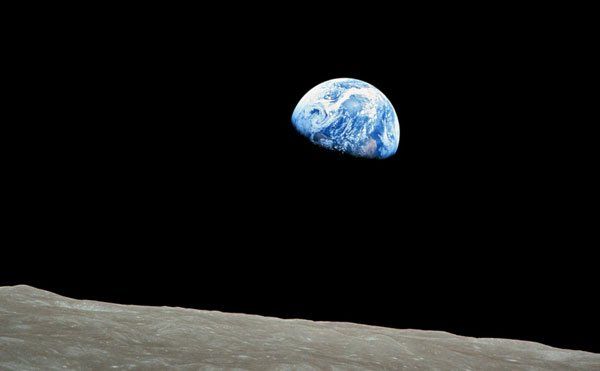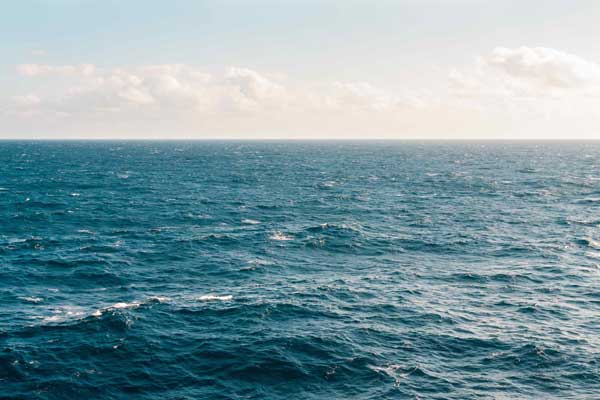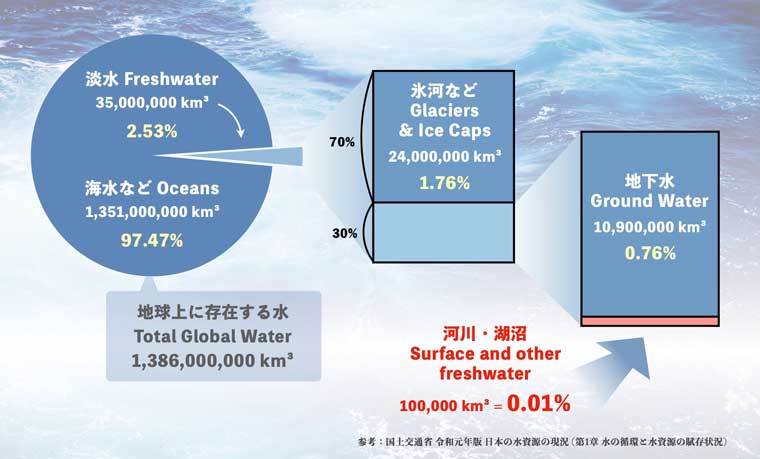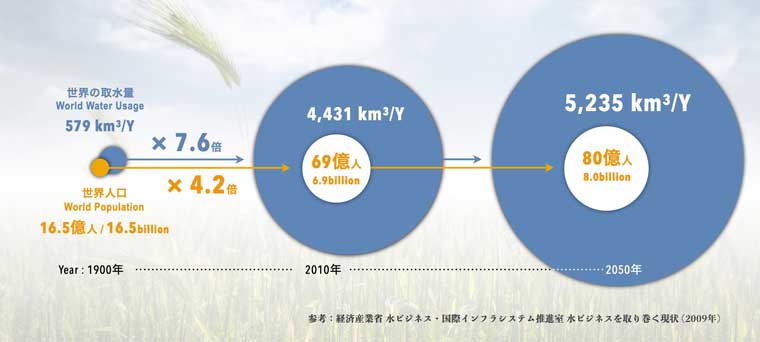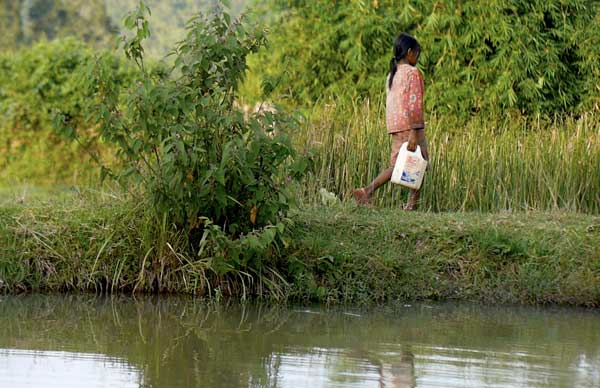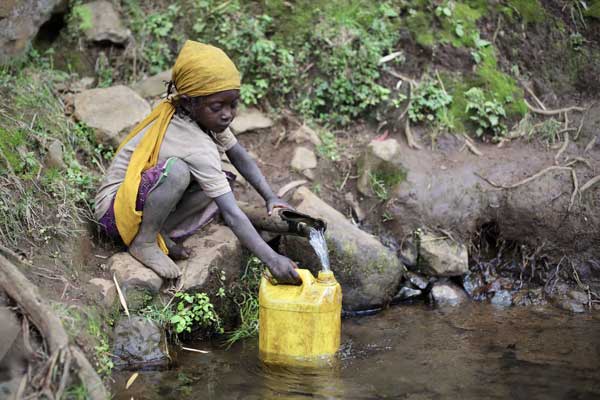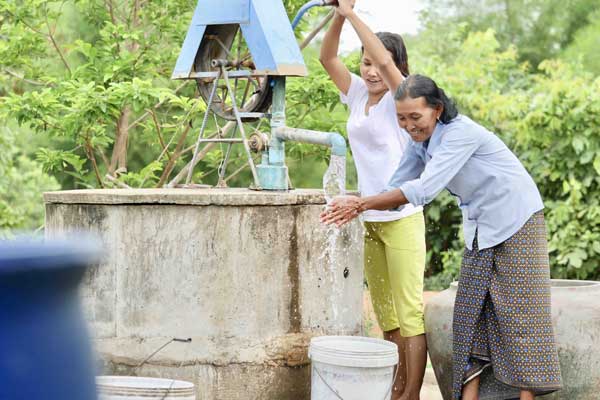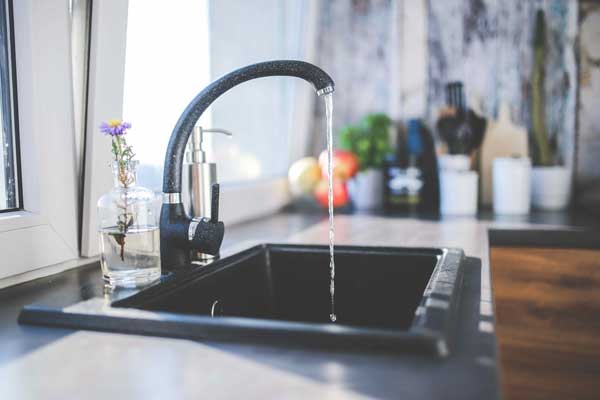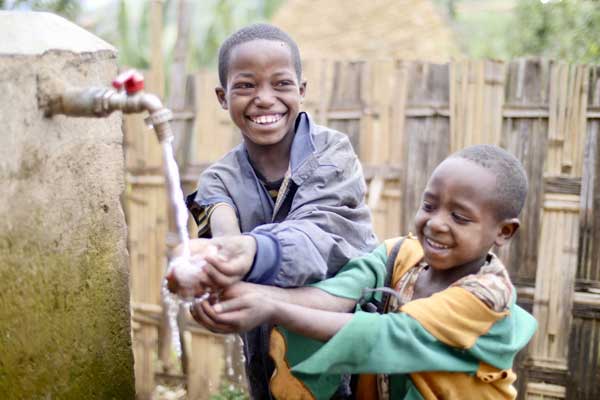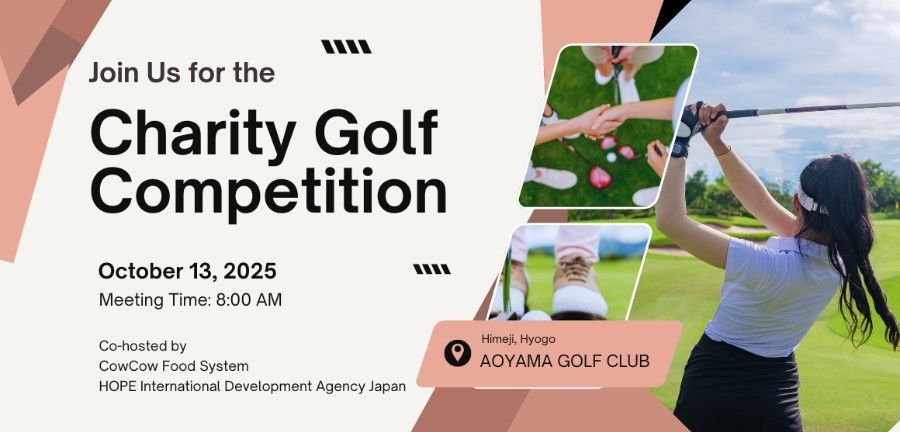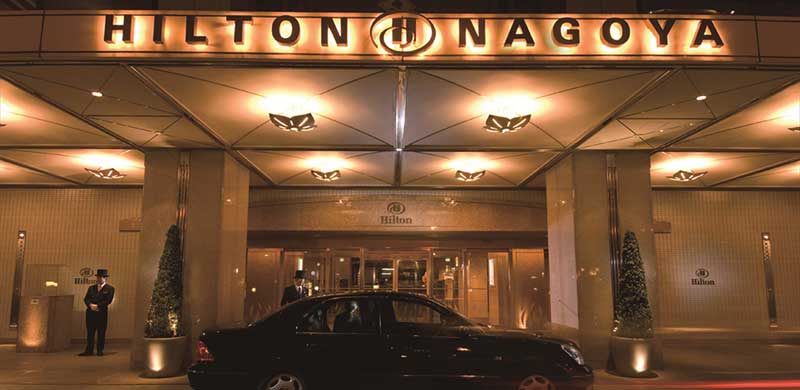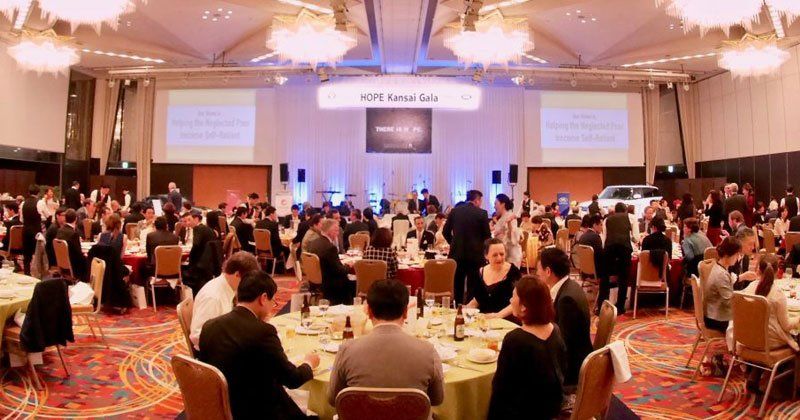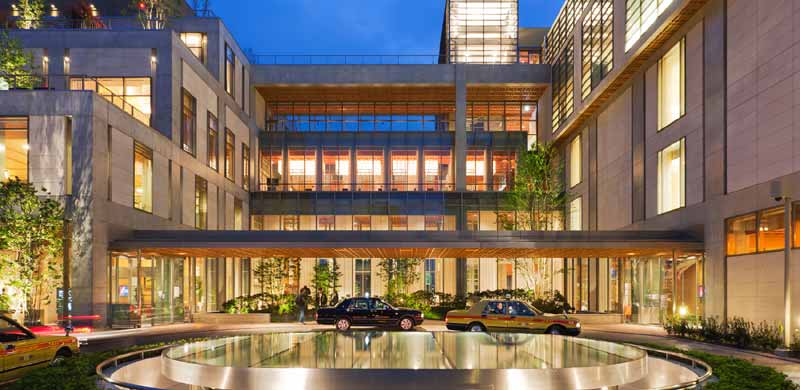The statistics '2.5', '70' and '0.01' related to water
HOPE-JP • March 16, 2020
Life on the Water Planet, in a Water Country
Compared to other countries, Japan is said to be a country rich in water resources and where the people are comparatively more deeply connected with water in their lives.
To digress briefly, we see a lot of kanji
(Asian writing characters) every day. Kanji are made up of two components: left-radicals
and right-radicals, and the left-radicals play an important role in defining the meaning of the kanji. So, can you guess which radical is the most commonly found in kanji?
As you might have noticed from the title, the most commonly used radical in Japan is "Sanzui”, which means "water". The Japanese must have had a deep relationship with water in ancient times.
Are you familiar with the picture of our Earth on TV and in photographs as a shining blue marble against the dark vastness of space? As a matter of fact, the Earth's ratio of oceans to land is 7:3. The oceans cover more than twice the area of land and, as such, Earth is called the Water Planet! However, as you may have guessed, most of that water is seawater. Unfortunately, seawater is not suitable for drinking nor for most agriculture.
So, what is the proportion of water available for human consumption out of all the water on Earth? This is where the numbers '2.5', '70' and '0.01' matter.
Water Planet Reality
Of the 1.4 billion km³ of water on Earth, 97.5% is seawater and the remaining 2.5%
is freshwater. What's more, about 70%
of that freshwater is locked up in ice and glaciers and is not available for our daily consumption. And yet, most unfrozen freshwater is found deep underground where it’s inaccessible. The water sources we can access are rivers, lakes and shallow underground water. This only constitutes 0.01%
of all the water on the planet, or the equivalent of a few eye drops in a 1.5 liter plastic bottle.
So, are we living on a water-scarce planet? Our precious water resources of only 0.01% on Earth are not evenly distributed. While some countries and regions are blessed with mountains and rivers that can store water from consistent annual rainfall, half of the world's population suffers from severe water shortages for at least one month of the year.
In particular, in recent years when the population of the Earth has been rapidly increasing and living standards have been improving, the water required not just for drinking but also for food production and industrial production has increased sharply. It is said that by 2040, the number of countries experiencing water shortages will increase by twenty or more.
A Downward Spiral caused by Water Shortages
The areas where HOPE sites are located in Ethiopia
and Cambodia
also suffer from water shortages. In developing countries, the lack of basic infrastructure such as water and sewage
systems also causes water shortages. Three out of ten people in the world still have no access to safely managed drinking water.
Life without guaranteed access to water creates a downward spiral of worsening poverty. Fetching water is often undertaken by women and children, who fetch water every day, which sometimes takes away educational opportunities from children. In areas without clean tap water, the water consumed often causes stomach problems and around 1,000 children in the world die from diarrhea everyday.
Lack of access to clean water deprives people of a sanitary way of life, and robs children of educational opportunities, and they become entrapped in a cycle of poverty, unable to become self-reliant.
For these reasons, HOPE is working to alleviate poverty by providing access to clean water, which serves as the foundation of our lives. Wells are being built in the western part of Cambodia's Pursat Province, and simple gravity-fed water systems are being constructed in the SNNP Region of southern Ethiopia. It is said that humans can live for 2 to 3 weeks without food, but no more than 5 days without water. HOPE is committed to ensuring that people around the world have equal access to this limited water resource and live dignified lives.
Can a World Water Shortage lead to a Water Shortage in Japan??
The term "water shortage" might not be easy to perceive for those of us living in Japan but we are not unaffected by the world's water problems.
Although Japan is known as a country rich in water, it is also the world's largest water importer.
Have you heard of "virtual water"? This is the amount of water needed to produce agricultural, livestock, and industrial products that are imported. Japan, which is low in food self-sufficiency, relies on importing many goods from clothing to daily necessities that actually consumes a large amount of water in the producing countries, which is the same as importing water. As of 2005, this volume of virtual water was about 80 billion cubic meters, which is equivalent to three lakes the size of Lake Biwa! (Area: 670.4 km². Catchment area: 3,174 km²)
Japan is said to be a country with few natural resources, but the fact that it has an abundance of clean water is unique in the world. It would be worth taking a moment on World Water Day
to rethink how much water you use everyday, how much water you can save, and the amount of food you throw away food that is produced through the use of large amounts of water.

